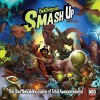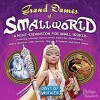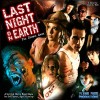

Write_By_the_Edge
gamer level 7
19684 xp
19684 xp
followers
39
39
Use my invite URL to register (this will give me kudos)
https://boardgaming.com/register/?invited_by=professor-walters
profile badges




recent achievements

Time Well Spent - Profiles
Click on the hourglass 100 times that appears when you are browsing Profile pages. learn more >
Click on the hourglass 100 times that appears when you are browsing Profile pages. learn more >

Champion
Give 500 hearts (loyalty points) to a single game
Give 500 hearts (loyalty points) to a single game

Strategist
Submit 5 game strategies (a type of game tip) and get 20 positive ratings.
Submit 5 game strategies (a type of game tip) and get 20 positive ratings.

Junior
Earn Professor XP to level up by completing Professor Quests!
Earn Professor XP to level up by completing Professor Quests!
Player Stats
Critic (lvl 3)
1365 xp
1365 xp
Explorer (lvl 4)
2659 xp
2659 xp
Professor (lvl 3)
752 xp
752 xp
Reporter (lvl 1)
259 xp
259 xp
About Me
I'm a big fan of board games, card games and role-playing games, particularly horror games. I enjoy both serious horror games (the Call of Cthulhu RPG, for example) and ones that are a bit more tongue in cheek (such as Gloom). Particular favorites within the horror genre are Eldritch Horror, Betrayal at House on the Hill, and Dead of Winter. I have a small blog (link in profile, below) where I post about writing and tabletop games, including some game reviews.














































































































Arkham Horror: The Card Game
Arkham Horror: The Card Game takes the horror in a new direction—or, more accurately, in one of multiple directions based on the decisions the investigators make. This newest addition to Fantasy Flight Games’ Arkham Files game line is a highly story-oriented, campaign-based game in which the choices you make and the outcomes of your encounters with the horrors of Lovecraft and the Cthulhu Mythos will alter the course of the game.
Arkham Horror: The Card Game is a living card game; for those not familiar with these (this was the first one I’ve ever tried, personally), it begins with the base game which offers an introductory, 3-part campaign (“Night of the Zealot”), five investigators, and an assortment of card sets which will be used to build the investigator decks and encounter decks. As time goes on, FFG will release additional expansions—the first will be “The Dunwich Legacy,” expected shortly, which will be a deluxe box starting a new campaign cycle, and then a series of smaller booster packs that will add to the Dunwich Legacy story. There are also small, one-shot scenarios available (so far these include “Curse of the Rougarou” and “Carnivale of Horrors”) which can be played separately or integrated into the larger campaign cycles as side adventures.
WHAT’S IN THE BOX?
The base game offers the “Night of the Zealot” campaign and five investigators (Roland Banks, Daisy Walker, Agnes Baker, “Skids” O’Toole, and Wendy Adams), as well as an assortment of encounter and investigator cards and cardboard tokens. There are enough cards in the base set for 1-2 players to play, though certain pairings of investigators will be difficult to use—for instance, Daisy and Roland both share the Seeker cards, and may have trouble building decks at the same time. However, if you don’t mind purchasing a second copy of the starter box, you can overcome this challenge as well as introduce the option of adding a 3rd and 4th player to the game. Personally, I recommend buying one set to start and if you decide you like the game, invest in the second set (though if you’ve enjoyed the other Arkham File games from FFG, chances are you will like this one, too).
GAMEPLAY
Each player builds her or his investigator deck, following the guidelines on the investigator’s character card (if you aren’t big on deckbuilding, the game includes a default deck list for each investigator that you can use). This will be a 30-card deck, plus one random basic weakness and two cards that are specific to your investigator (an asset and a weakness). Each investigator has their own “role” such as Guardian, Seeker, or Survivor that affects how they play and what cards they choose from to build their deck.
Next, you build the encounter deck according to the scenario you are playing, combining specified subsets of cards. Some cards will be set aside to bring into play later in the scenario, while others won’t be used in certain scenarios. There will also be two small sets of “storyline” cards: the agenda (which follows the progress of the dark forces you are struggling against as their plans progress) and the act (which moves forward as you successfully investigate the story). The agenda advances as doom is added to it each turn, while the act most commonly advances through the expenditure of clues your investigators earn. These clues will either be spent directly on the act, or to set up something that allows you to advance the act. There will also be location cards representing the places you can explore over the course of the story.
There is also the chaos bag, which contains an assortment of tokens (determined by the difficulty level you choose to play the campaign at) which will be drawn from when your investigator attempts a skill check. The tokens will modify the result (usually with a negative number, but not always) and if the modified skill score equals or exceeds the target number, you succeed.
THE STORY CONTINUES…
Perhaps the best part about Arkham Horror: The Card Game is that as you progress through each part of the campaign, the choices and outcomes will affect and alter how the story goes. A campaign log (which can be photocopied from the campaign guide or printed off of the FFG website) records results from each scenario, which will affect set up and game play of subsequent scenarios. Investigators will earn experience that allows them to swap better cards or improved versions of basic cards into their decks (still keeping to the 30 card limit), and some game events will give the investigators additional cards that they can add as well. Extremely bad events, including being KO’d or driven mad, will give an investigator trauma that causes them to start subsequent scenarios with damage or horror already inflicted on them.
CONCLUSION
This game is a lot of fun, and because of the variety of choices for investigator teams, deck builds, and the various ways each scenario can play out, it has a lot of replay value. Plus, new stories and campaigns will keep coming, as long you don’t mind buying more expansions every month or so (the mini expansions are relatively cheap, and the deluxe expansions are probably only going to be introduced once or twice a year I suspect).
If you enjoy Lovecraftian horror and story driven games (with an opportunity for roleplaying, if you like that, too), this is a great addition to your game shelf that I would highly recommend.